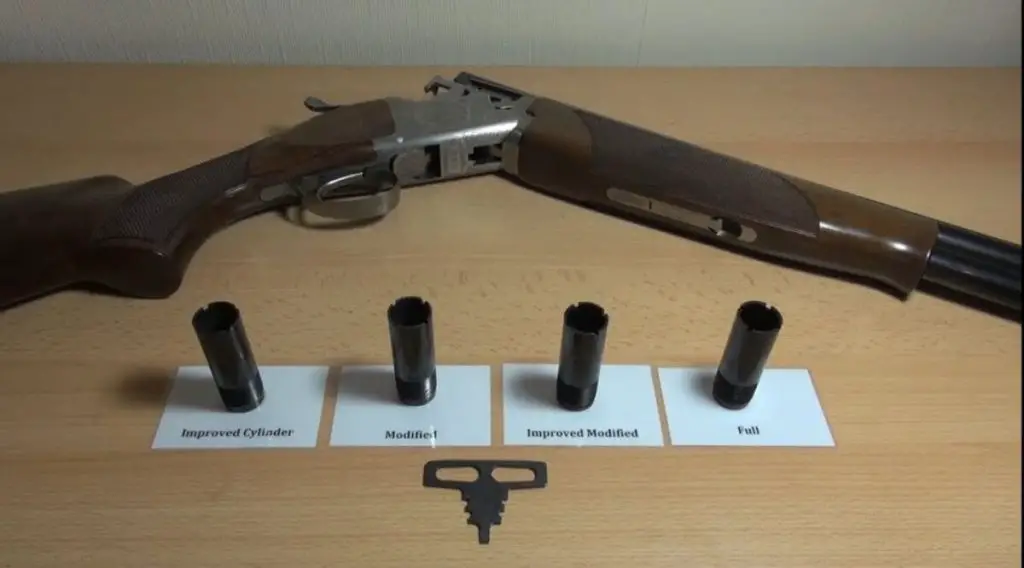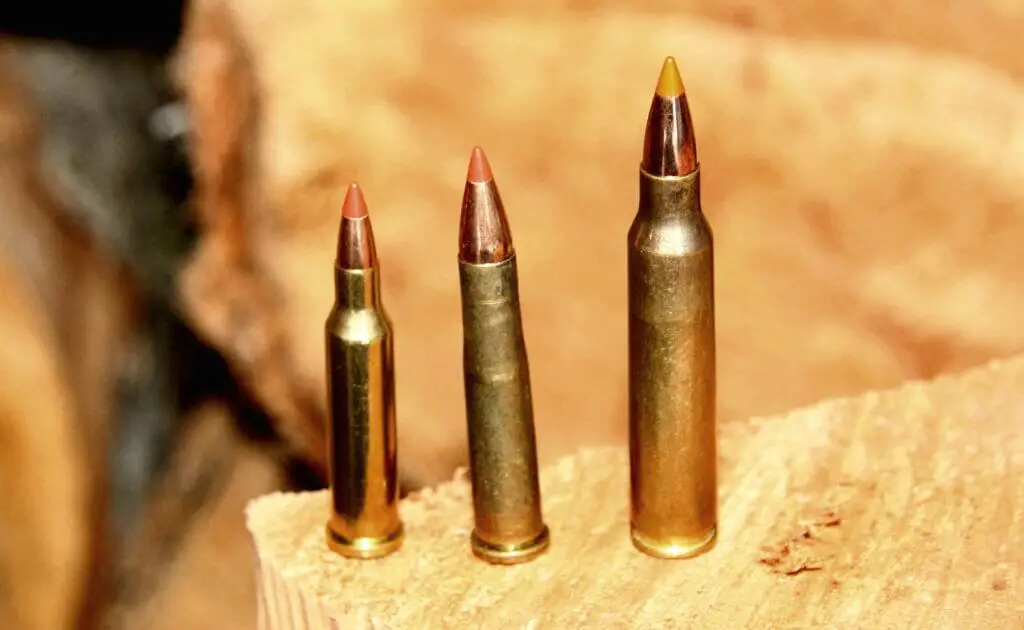When it comes to long-range shooting, the debate between the .270 Winchester and the .300 Winchester Magnum has been ongoing for decades. Born out of necessity and innovation, these two giants of the firearms world offer their own unique set of advantages and drawbacks. In this blog post, we will comprehensively compare the .270 Win and .300 Win Mag, delving deep into their origins, ballistics, performance, and practical applications. Whether you’re an experienced shooter or a budding enthusiast, this blog post will equip you with the knowledge you need to make an informed decision between these two legendary cartridges.
The Origins of the .270 Winchester and .300 Winchester Magnum
History of the .270 Winchester
The .270 Winchester was introduced by Winchester in 1925 as a high-velocity cartridge for big-game hunting. Based on the .30-06 Springfield cartridge, the .270 Win underwent necking down to accommodate a .277-inch bullet diameter, which would grant it flatter trajectories and better terminal ballistics. The cartridge quickly gained popularity and, to this day, remains one of the most sought-after calibers for hunting medium to large-sized game.
History of the .300 Winchester Magnum
The .300 Winchester Magnum was developed in 1963, also by Winchester, with the goal of providing shooters with a high-performance .30-caliber cartridge for long-range hunting and competitive shooting. It was based on the .375 H&H Magnum case, inheriting its belted design and retaining its .30-caliber bullet diameter. The .300 Win Mag quickly gained acclaim and has been adopted by various military and law enforcement agencies, notably the United States Marine Corps as their sniper rifle cartridge.
Ballistic Comparison: .270 Win vs .300 Win Mag
Muzzle Velocity
Muzzle velocity is a critical factor in long-range shooting as it affects bullet stability, accuracy, and energy retention. The .270 Winchester is known for its high velocities, ranging from 2,700 to 3,200 feet per second (fps) with bullet weights from 130 to 150 grains. In comparison, the .300 Win Mag is also revered for its high velocities, clocking between 2,900 and 3,450 fps with bullet weights ranging from 150 to 200 grains. While both cartridges provide blistering speed, the .300 Win Mag holds a slight edge over the .270 Win in terms of average velocity.
Ballistic Coefficient
The ballistic coefficient (BC) measures a bullet’s aerodynamic performance – the higher the BC, the better a bullet can cut through the air and maintain its velocity. Heavier bullets, typically used in the .300 Win Mag, tend to have higher BC values than lighter bullets in the .270 Win. As a result, the .300 Win Mag consistently exhibits superior resistance to wind drift and drop, giving it an advantage in long-range shooting and hunting applications.
Energy
The kinetic energy delivered by a bullet upon impact has a direct effect on terminal performance and game-stopping power. The .270 Win boasts impressive energy figures, ranging from 2,500 to 3,000 foot-pounds (ft-lbs) depending on bullet weight and velocity. On the other hand, the .300 Win Mag supplies a whopping 3,600 to 4,000 ft-lbs of energy on average, affording it additional stopping power over the .270 Win, especially when taking down larger or more resilient game animals.
Practical Applications: Hunting, Long-Range Shooting, and Recoil
Hunting
Due to their remarkable ballistics and energy, both the .270 Win and .300 Win Mag are excellent choices for hunting various game species, from medium-sized deer to large, tough-skinned animals like elk and moose. That being said, the .270 Win is most effective on deer, antelope, and other thin-skinned game, while the .300 Win Mag shines in the realm of bigger game like elk, moose, and bear, providing additional penetration and stopping power. Ultimately, your choice should be based on the type of game you intend to hunt and the distances at which you plan to shoot.
Long-Range Shooting and Competition
Both projectiles boast superb long-range capabilities, with the .270 Win’s lighter weight and flatter trajectory giving it an edge in certain conditions. However, the heavier, more aerodynamically efficient .300 Win Mag achieves improved resistance to wind drift and drop, making it a more consistent performer in long-range conditions. Additionally, the higher energy levels and larger selection of high-BC projectiles in the .300 Win Mag have contributed to its adoption by competitive shooters and military snipers alike.
Recoil
One of the most significant differences between the .270 Win and .300 Win Mag is recoil. The .270 Win’s mild recoil is one of its most noteworthy attributes, making it a popular choice among shooters of varying experience levels. Conversely, the .300 Win Mag’s powerful recoil can be more challenging for some, potentially impacting shot accuracy and shooter comfort. While recoil varies depending on firearm weight and individual tolerances, the .270 Win is generally considered the more manageable of the two.
Ammunition Availability and Firearm Selection
Since their inception, both the .270 Win and .300 Win Mag have enjoyed immense popularity, with a wide range of ammunition options and firearm choices available for each. From factory loads to premium hunting and match-grade ammunition, shooters can easily find options catering to specific applications and requirements. Furthermore, numerous rifle manufacturers produce bolt-action, semi-automatic, and even lever-action firearms chambered in both calibers, providing enthusiasts with an array of options in terms of rifle preference and budget.
Ultimately, the decision between the .270 Win and .300 Win Mag comes down to personal preference, intended application, and experience level. While the .270 Winchester offers outstanding performance for medium-sized game and mild recoil, the .300 Winchester Magnum excels in long-range shooting and big-game hunting, boasting superior energy and ballistic coefficient values. By considering these aspects, you can confidently choose the ideal cartridge for your specific needs and enjoy your shooting and hunting adventures.
Frequently Asked Questions
Is a 270 better than a 300 Win Mag?
Both the 270 and 300 Win Mag are excellent cartridges, but their performance differs in some aspects. The 270 is better for longer-range shooting and flatter trajectory, while the 300 Win Mag offers more kinetic energy and versatility in ammunition. The best choice depends on your intended use, preference, and desired recoil.
Is 300 Win Mag overkill for deer?
While the 300 Win Mag has more than enough power to take down deer, it is not necessarily overkill. A skilled shooter can use this cartridge effectively for deer hunting without causing excessive damage to the meat. However, if you’re uncomfortable with the recoil or plan on hunting solely for deer, you may want to consider a more moderate cartridge like the 270.
Is 270 enough for elk?
Yes, a 270 cartridge can be effective on elk when using the proper bullet and shot placement. Most hunters recommend using a heavier bullet with high-quality construction for better penetration and energy transfer. However, the 300 Win Mag has a clear advantage when it comes to overall stopping power and range.
What rifle is more powerful than a 300 Win Mag?
There are several rifles with more power than the 300 Win Mag, including the 338 Lapua, 375 H&H Magnum, and the 50 BMG. However, these calibers are often intended for more specialized applications such as dangerous game hunting, large animals, or long-range shooting.
What is the effective range of a 270 vs 300 Win Mag?
Both the 270 and 300 Win Mag have long effective ranges. The 270 is known for its flat trajectory, making it effective for ranges up to 500 yards or more. The 300 Win Mag, with its increased energy, can be effectively used at ranges exceeding 600 yards, depending on bullet choice and shooter skill.
Which cartridge has less recoil, a 270 or a 300 Win Mag?
Generally, the 270 has less perceived recoil than the 300 Win Mag. This is due to the lighter bullet weight and less powder charge compared to the 300. Less recoil usually translates to improved shooter comfort and faster follow-up shots if needed.
How do the 270 and 300 Win Mag compare in terms of weight?
Rifles chambered in both calibers can vary significantly in weight, depending on the manufacturer and specific model. Overall, the difference in weight between a 270 and a 300 Win Mag rifle is generally minimal and not a primary consideration for most shooters when choosing between the two cartridges.
Which cartridge is more available and affordable: the 270 or 300 Win Mag?
In terms of availability and affordability, the 270 is generally more widespread and cost-effective than the 300 Win Mag. The 270 cartridge is more popular for general hunting purposes, so you are more likely to find it in ample supply at local sports stores and online retailers. Additionally, the 270 is often less expensive than the 300 Win Mag, both in terms of factory ammunition and reloading components.
Which has a better selection of factory loads, the 270 or 300 Win Mag?
While both the 270 and 300 Win Mag offer a wide variety of factory loads, you may find a broader selection for the 300 Win Mag due to its versatility in bullet weights and applications. This means that you can find a 300 Win Mag load to suit your specific needs, whether it’s big game hunting or long-range target shooting. However, the 270 also has no shortage of high-quality factory loads available that cater to various hunting applications.
Can a 270 and 300 Win Mag be used interchangeably in rifles chambered for their respective calibers?
No, you cannot interchange a 270 and 300 Win Mag in rifles chambered for these calibers. The two cartridges have different dimensions, bullet diameters, and performance profiles. Attempting to shoot the wrong cartridge in your rifle can result in dangerous malfunctions and damage to your firearm.
- How to Put a Scope on a Mosin Infantry in Tarkov: A Quick Guide - November 7, 2024
- How to Edit a Scope Box in Revit: A Step-by-Step Guide - November 6, 2024
- How to Put a Scope on Mosin Tarkov: Expert Tips for Gamers - November 6, 2024


